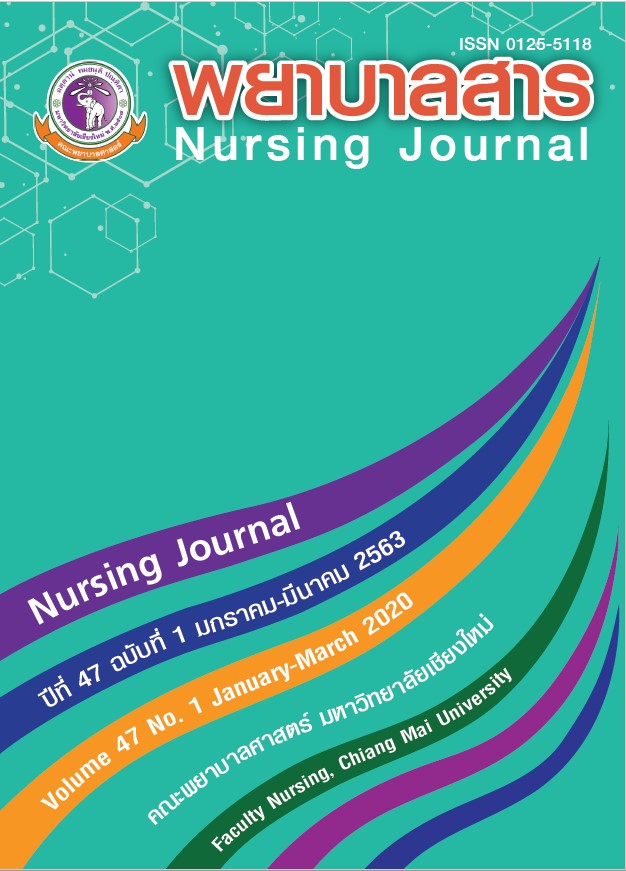Political Efficacy and Political Participation Among Nurses in Tertiary Hospitals, the Republic of Kenya
Keywords:
Political efficacy, Political Participation, Nurse, Tertiary HospitalsAbstract
Nurses are health professionals with firsthand knowledge and expertise to influence health policy. This correlational descriptive study aimed to determine political efficacy, political participation, and the relationship between political efficacy and political participation among nurses at the tertiary level hospitals, the Republic of Kenya. The sample consisted of 347 nurses from two tertiary level hospitals, selected using the stratified random sampling method. Research instruments were the Political Efficacy (PE) Scale, and the Political Participation (PP) Scale. The Cronbach’s alpha coefficient of both the PE and PP Scales were 0.82. Data was analyzed using descriptive statistics and Spearman’s Rank Correlation Coefficient. The results revealed that the overall scores for PE and PP were at moderate levels. There was a statistically significant positive correlation between PP and PE. The study results can be used by nurse administrators to develop strategies to improve nurse’s political efficacy and political participation.
References
Angote, J. (2013). Nurses at KNH strike over allowances. Nairobi: Nation Media Group.
Avolio, C. D. (2014). Political advocacy: Beliefs and practices of registered nurses (Doctoral dissertation, University of Windsor). Retrieved from http://scholar.uwindsor.ca/etd
Balch, G. I. (1974). Multiple indicators in survey research: The concept sense of political efficacy. Political Methodology, 1(2), 1-43.
Bandura, A. (1977). Self-efficacy: toward a unifying theory of behavioral change. Psychological review, 84(2), 191.
Banschbach, S. K. (2008). Finding the voice of nursing. Association of perioperative registered nurses (AORN) journal, 88 (3), 347-349.
Boswell, C., Cannon, S., & Miller, J. (2005). Nurses’ political involvement: Responsibility versus privilege. Journal of professional nursing, 21 (1), 5-8.
Burns, N., & Grove, S. K. (2010). Understanding nursing research: Building an evidence-based practice. St. Louis, Missourri: Elsevier Health Sciences.
Campbell, A., Gurin, G., & Miller, W. E. (1954). The voter decides. New York: Harper & Row.
Caprara, G. V., Vecchione, M., Capanna, C., & Mebane, M. (2009). Perceived political self-efficacy: Theory, assessment, and applications. European Journal of Social Psychology, 39 (6), 1002-1020.
Chan, S. W., & Cheng, B. S. (1999). Political participation in Hong Kong: a study. Journal of Nursing Management, 7 (3), 167-175.
Croucher, R. (2014). Defending independence. Legal Studies, 34(3), 515-535.
Herman, D. W. (2011). Nurse state legislators: The journey to state capitols (Doctoral dissertation,
University of South Carolina). Retrieved from http://scholarcommons.sc.edu/etd/2588
Hewlett, C. L. (2008). Political participation of nurses (Doctoral Dissertation, University of
Maryland, Baltimore). Available from ProQuest Dissertations and Theses database.
Juma, P. A., Edwards, N., & Spitzer, D. (2014). Kenyan nurses involvement in national policy development processes, Nursing research and practice. Retrieved from:http://dx.doi.org/10.1155/2014/236573
Jun, S. Y., Ko, I. S., & Bae, K. R. (2014). Political interest, political efficacy, and media usage factors influencing political participation in hospital nurses. Journal of Korean Academy of Nursing mAdministration, 20 (3), 342-352.
Kenyatta National Hospital. (2016). Management at Kenyatta National Hospital.Retrieved fromhttp://www.knh.or.ke/homepage/about us.
Lane, R. E. (1960). Political life: Why people get involved in politics. Political Science Quarterly, 75 (1), 121-123.
Levy, B. L. (2011). I could make a difference: Research and theory on educating adolescents for political engagement (Doctoral dissertation, University of Michigan)
Mbindyo, P., Gilson, L., Blaauw, D., & English, M. (2009). Contextual influences on health worker motivation in district hospitals in Kenya. Implementation Science, 4(1), 43. doi:10.1186/1748-5908-4-43
McDaniels, O. B. (1992). Political participation of registered nurses: A correlational study. Dissertation Abstracts International, 52 (04), 1957B.
Ministry of Health Kenya. (2013). Kenya Health Policy 2012–2030. Retrieved from https://www.afidep.org/?wpfb_dl=86.
Moi Teaching and Referral Hospital (2016). The hospital administration. Retrieved from http://www.mtrh.or.ke/administrator/index.php?option=com_conten t.
Moran, V. J. (2014). Political participation among Louisiana advanced practice nurses (Doctoral dissertation, University of Phoenix).
Morrell, M. E.. (2003). Survey and experimental evidence for a reliable and valid measure of internal political efficacy. The Public Opinion Quarterly, 67 (4), 589-602.
Muchui, D. (2014). Nurses threaten to strike over devolution. Nairobi: Kenya. Retrieved from http://www.businessdailyafrica.com/Nurses-threaten-to-strike-overdevolution/-/539546/2524452/-/1g2ihwz/-/in
Nation Media Group. (2014). Nurses’ union wants government to address demands to avertlooming strike. Retrieved from http://www.nation.co.ke/counties/meru/health-workersstrike-threat/-/1183302/2528720/-/b7htkw/-/index.html.
Oden, L. S., Price, J. H., Alteneder, R., Boardley, D., & Ubokudom, S. E. (2000). Public policy involvement by nurse practitioners. Journal of Community Health, 25(2), 139-155.
Ojwang, B. O., Ogutu, E. A., & Matu, P. M. (2010). Nurses’ impoliteness as an impediment to patient’s rights in selected Kenyan hospitals. Health and human rights, 12 (2), 101-117.
Salvador, D. (2010). Registered nurses perceptions and practices related to health policy (Doctoral dissertation, University of Toledo).
Shariff, N. (2014). Factors that act as facilitators and barriers to nurse leaders’ participation in health policy development. BMC nursing, 13 (1), 20.
Short, N. M. (2008). Influencing health policy: Strategies for nursing education to partner with nursing practice. Journal of Professional Nursing, 24 (5), 264-269.
Sohl, S. (2014). Pathways to political efficacy: theoretical considerations and empirical illustrations on youths’ acquisition of political efficacy. Culture and Socialization, 2 (4), 389-417.
Vandenhouten, C. L., Malakar, C. L., Kubsch, S., Block, D. E., & Gallagher-Lepak, S. (2011).Political participation of registered nurses. Policy, Politics, & Nursing Practice, 12(3), 159-67.doi:10.1177/1527154411425189.
Verba, S., Schlozman, K., & Brady, H. (1995). Voice and equality: Civic voluntarism in American politics. Cambridge, MA: Harvard University Press.
Yamane, T. (1973). Statistics: An introductory analysis (3rd ed.). New York: Harper and Row.
Downloads
Published
How to Cite
Issue
Section
License
บทความที่ได้รับการตีพิมพ์เป็นลิขสิทธิ์ของวารสารพยาบาลสาร
ข้อความที่ปรากฏในบทความแต่ละเรื่องในวารสารวิชาการเล่มนี้เป็นความคิดเห็นส่วนตัวของผู้เขียนแต่ละท่านไม่เกี่ยวข้องกับมหาวิทยาลัยเชียงใหม่ และคณาจารย์ท่านอื่นๆในมหาวิทยาลัยฯ แต่อย่างใด ความรับผิดชอบองค์ประกอบทั้งหมดของบทความแต่ละเรื่องเป็นของผู้เขียนแต่ละท่าน หากมีความผิดพลาดใด ๆ ผู้เขียนแต่ละท่านจะรับผิดชอบบทความของตนเองแต่ผู้เดียว






